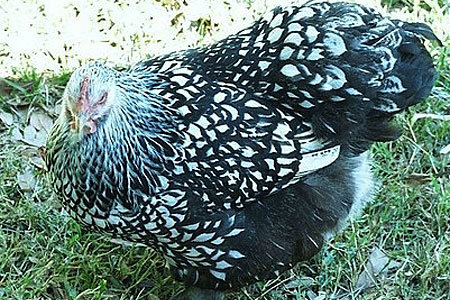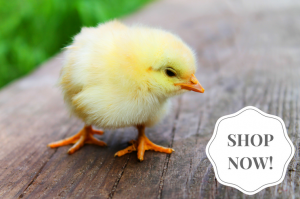
The stunning single laced plumage pattern of both silver laced and golden laced Cochins is genetically one of the most difficult patterns to perfect. That’s because the single laced plumage pattern involves a number of different genes that must influence each other in specific ways, some of which remain unknown. In simplified form, here’s how it works:
Color vs. Pattern
A chicken’s color is the dominant color of its plumage. All of the various beautiful chicken colors we know are based on just three colors — black, white, and red (or golden). That means all our different variety colors are the result of genetic masking, inhibiting, or enhancing the black and red.
Pattern refers to arrangement of the colors. A pattern is either primary or secondary, depending on whether it involves the entire plumage or each single feather, respectively. What makes things complicated is that any color can have any pattern, or even more than one pattern, depending on different combinations of genes.
Silver & Golden
The color of a silver laced Cochin is white. Lacing is a secondary pattern that results in a black rim around each white feather.
The color of a golden laced Cochin is red, also known as golden. Lacing, here again, is a secondary pattern that results in a black rim around each red feather.
Lacing Pattern
How the lacing pattern occurs is genetically somewhat complicated. First comes the pattern gene (Pg). This gene influences black pigment, usually by arranging it in concentric circles. Silver laced and golden laced Cochins have two Pg genes, one from each parent. But, rather than creating black lacing, these genes alone leave the main color (white or red) at the edges of the feathers.
To achieve black lacing requires the melanizing gene (M1), which enhances the black pigment circles resulting from the Pg gene. The M1 gene not only broadens the black circles, but also shifts them toward the edge of each feather. Silver laced and golden laced Cochins have two M1 genes, one from each parent.
However, the combination of Pg/Pg plus M1/M1 results in double lacing, or two concentric bands of black around each feather. Cochins, on the other hand, are single laced, meaning they have a single band of black around each feather.
To achieve the secondary pattern of single lacing requires the Columbian gene (Co). The Columbian gene itself restricts the location of black pigment, resulting in a primary pattern in which a chicken has black neck, wing, and tail feathers. Most Columbian varieties are black and white.
Silver and golden laced Cochins have two Co genes, one from each parent. In combination with two Pg genes and two M1 genes, the Columbian genes move all the black lacing pigment to the feathers’ edge, creating the pattern of single lacing. Further genetic studies may reveal other genes that in some way influence the lacing pattern.
Laced Cochins
Both the golden laced and silver laced varieties were admitted to the American Poultry Association Standard of Perfection in 1965. Their unusual and gorgeous plumage pattern, combined with this breed’s easy disposition, makes these Cochins especially popular at exhibition, as well as beloved backyard pets.
Helpful Links
Silver Laced and Golden Laced Cochins from Cackle Hatchery®
Chicken Heredity and Genetic Basics
And that’s today’s news from the Cackle Coop.
Gail Damerow has written several books about keeping poultry, many of them available from the Cackle Bookstore.

